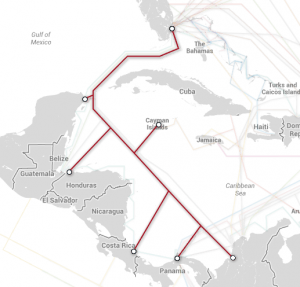Tuesday Morning: Some Kind of Freak
Today’s the intersection of my Gwen Stefani jag and International Women’s Day 2016. Need some more estrogen-powered music to celebrate IWD? Try this list — note and compare Lesley Gore’s You Don’t Own Me and Nancy Sinatra’s These Boots Are Made for Walking against more recent tunes like No Doubt’s Just A Girl.
Let’s roll…
Volkswagen shocked, SHOCKED! the EPA went public on the diesel emissions standards cheat
But by the time the EPA made public statements regarding VW, the German automaker had already known about the International Council on Clean Transportation’s research results for a year and had yet to reveal to shareholders the risk of prosecution and penalties. VW’s leadership hoped for a mild and quiet slap on the hands and enough time for a technical solution before the EPA’s disclosure:
“In the past, even in the case of so-called ‘defeat device’ infringements, a settlement was reached with other carmakers involving a manageable fine without the breach being made public,” VW argued. “And in this case, the employees of Volkswagen of America had the impression on the basis of constructive talks with the EPA that the diesel issue would not be made public unilaterally but that negotiations would continue.”
Hope somebody is looking at insider trading for any sign that VW executives were unloading stock in the period between September 2014 when ICCT’s results were published, and when the EPA went public in 2015. Wonder what penalties there are under German/EU laws for this?
USDOJ appealed last week’s ruling in Brooklyn iPhone 5S case
At the heart of this appeal is Apple’s past cooperative actions when federal law enforcement asked for assistance in unlocking iPhones. Apple, however, said past acquiescence is not consent. USDOJ has now asked for review of Judge Orenstein’s ruling.
Apple co-founder Steve Wozniak appeared on Conan, sided unsurprisingly with Apple
Woz admitted to having tried his hand at writing viruses for Mac, but the entire premise terrified him, compelling him to destroyed his efforts. Video of his appearance included at this link.
France to punish phonemakers for encryption, while UK’s GCHQ says it should get around encryption
A narrow body of water, a different language, and a recent terrorist attack make for very different reactions to encrypted communications. France’s Parliament voted yesterday to punish phonemakers which do not cooperate with law enforcement on unencrypting data; the bill is not yet law, subject to further parliamentary process. Meanwhile, Britain’s spy chief said he hopes methods can be developed to get around encryption without building backdoors.
Drive-by quickies
- North Korea hacked smartphones of South Korean officials, reports SK’s spy agency (Phys.org) — not much of a surprise, right?
- Mossad agents stuck with a hefty towing tab after getting stuck in German mud (euronews) — ~mumbling about opsec~
- F-35 bomber’s latest problem: radar that must be rebooted (The Guardian) — still has to be tested for cyber security, too.
- US looking at rotating long-range bombers through Australia’s Northern Territory (ABCNews24)
- Malaysia Air flight MH370 went missing two years ago today, and still no sign of the plane, passengers, cargo (The Sun Daily) — the investigation remains open at this time.
And it’s Presidential Primary Day in Michigan, Mississippi, Idaho, Hawaii. I may avoid social media for most of the day for this reason. Hasta pasta!

![[NSA slide indicated info sec AV firms targeted for surveillance]](https://www.emptywheel.net/wp-content/uploads/2015/06/AV-companies_targed_22JUN2015-300x223.png)
